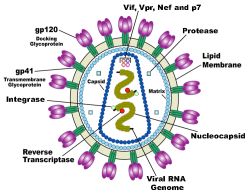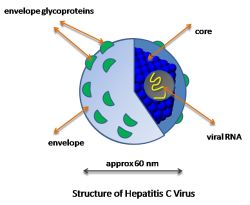What does HLA-B27 do?
Introduction
This page explains the role of the HLA-B27 gene in Ankylosing Spondylitis in relationship to the primary sites of skeletal disease at the enthesis and related sites of high mechanical stressing including the sacroiliac joint bone.
The HLA-B27 gene
Patients with Ankylosing Spondylitis may think that that they carry a defective gene because they have a disease. In medicine, many diseases are not due to faulty or defective genes but genes that are "too good" or are overactive or have what is called a "gain of function". The vast majority of patients with Ankylosing Spondylitis carry a gene called HLA-B27.
This page addresses common questions that a subject with Ankylosing Spondylitis might ask such as:
- Do I have a faulty gene?
- Do I have a weakened immune system?
Basic Immunology
HLA-B27 is one of several hundred genes called MHC Class-1 genes. We get 3 such MHC Class-1 genes from each parent so have 6 in total. Given that there are so many of these genes and that each individual only carries 6 of these, the MHC region is highly variable in different populations.
HLA-B27 is very common in some Eskimo populations but is rare in Japan. The fact that HLA-B27 is so common suggests that it was highly advantageous in some ancestral populations. The simplest theory is that it protected some populations from life threatening infections and so HLA-B27 was more likely to be passed on. If so, many Ankylosing Spondylitis sufferers are here thanks to this gene!
Evidence that HLA-B27 is a good gene
Modern science or the type of science called experimental science allows us to directly observe what happens in people carrying HLA-B27 when they are exposed to serious infections.
HLA-B27 is associated with stopping patients with HIV infection progressing to full blown AIDS. This is not unique to the HLA-B27 gene but is shared with some other MHC Class-1 genes [1].
HLA-B27 is also associated with the non progression of hepatitis C infection.
Mutations in the virus that allow it to avoid interacting with HLA-B27 allows for the virus to trigger disease progression [2,3,4].

|

|
| Deadly modern scourges including HIV and Hepatitis C viruses are better controlled in subjects that are HLA-B27 positive. As these simple cartoons show the two viruses are structurally very different. | |
This ability of HLA-B27 to constrain the scourge of modern infectious diseases may mean that it is more likely to attack the human body, relatively harmless resident bacteria or other microbial agents, and to mount an excessively aggressive immune response.
HLA-B27 and the Bone
What has emerged in recent years is that the HLA-B27 gene effect in Ankylosing Spondylitis appears to be played out in the bone in patients spines [5]. Scientists have not studied the immunology of HLA-B27 at this site due to extreme difficulty with enthesis and bone tissue access. At present we can say that a good gene has gone bad in the bone of AS cases.
Some doctors have suggested that HLA-B27 does unconventional things like not fold properly. We don't think that this is credible enough based on the available evidence and based on its remarkable germ fighting properties.
Summary
HLA-B27 does not appear to be a defective or faulty gene. For poorly defined reasons, it is associated with inflammation in the bone adjacent to entheses and sacroiliac and other fibrocartilagenous joints. It could be that inflammation in Ankylosing Spondylitis is the downside of having a gene with remarkable infection fighting abilities.
References





Resources
valuable information from the Spondylitis Association of America